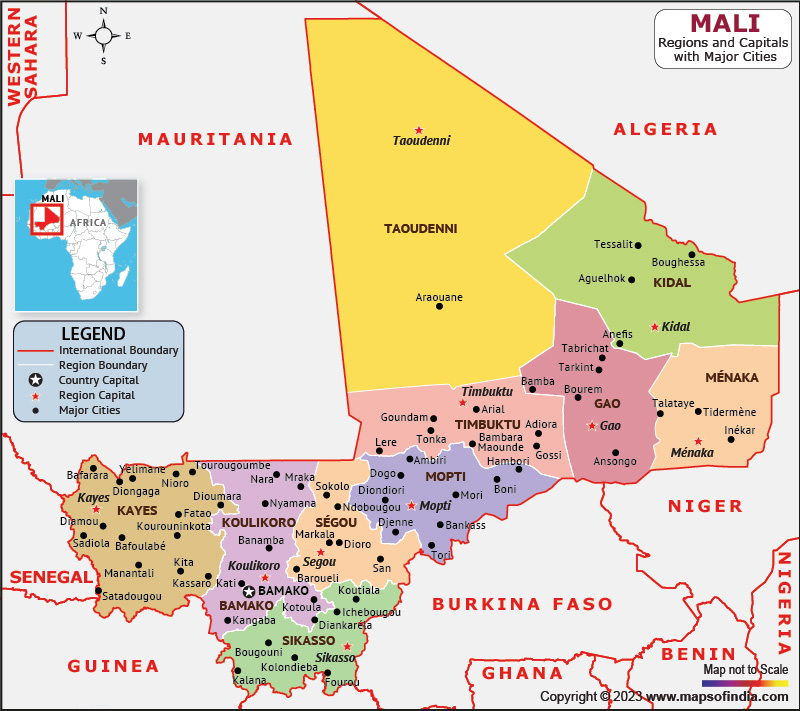Mali, also known as the Republic of Mali, is an inland nation in West Africa. With a total area of more than 1,240,000 square kilometers, Mali is the eighth-largest nation in Africa. Mali has 21.9 million people. Agriculture and mining are the two industries that drive the nation's economy. Gold is one of Mali's most important natural resources, and it is produced there in the third-largest quantities on the African continent. Additionally, salt is exported from there.
Bamako is the country's capital and largest city. Mali is a sovereign nation with eight distinct regions, and its northern border extends to the Sahara Desert. Mali and other members of the Economic Community of West African States have their financial affairs managed by the Central Bank of West African States. Mali is regarded as one of the world's poorest nations.
History:
Northern Mali has been inhabited since prehistoric times, according to rock carvings and paintings. Mali was formerly a part of three illustrious West African empires that presided over the trans-Saharan trade in slaves, gold, salt, other precious commodities, and others during the period from 1312 to around 1337. In 1946, when a territorial assembly was established, political parties were first created. After some time, the Sudanese Union-African Democratic Party took control. The region adopted the name Sudanese Republic in October 1958, and on November 24, 1958, it was formally proclaimed an independent state within the French Community. Mali's declaration of independence took place on September 22.
Culture:
As a result of its long history as a crossroads between northern and western Africa, Mali has amassed a rich cultural heritage. Mali hosts weekly markets, frequently rotating through various regions. These crowded and well-attended markets sell and trade handwoven textiles, fresh fish, produce, and other goods. Sheep, goats, and other animals from herders are brought in for trade and sale. Malians' diverse everyday cultures are a reflection of the nation's ethnic and geographic diversity. Boubous, which are typical of West Africa, is the most common type of clothing worn by Malians. Malians frequently take part in customary festivals, dances, and rituals.
Language:
The majority of the population speaks Bambara, also known as Bamanakan or Bamanan, which is also the language's official name. Despite being the primary language of instruction in schools, French, which remained the official language after independence, is not listed as a first language in the census.
Geography:
The geographic location of Mali is between latitudes 10° and 25°N and longitudes 13°W and 5°E. With Algeria to the north-northeast, Niger to the east, Burkina Faso to the south-east, Ivory Coast to the south, Guinea to the south-west, Senegal to the west, and Mauritania to the north-west, Mali shares borders with these countries.
Mali is the 24th largest country in the world, with an area of 1,242,248 square kilometers.
| Official name | Republic of Mali |
| Capital | Bamako |
| Population | 2.19 crores |
| Area | 1,240,000 square kilometres |
| Currency | West African CFA franc |
| Religion | Islam |
| Language | French |
| Major Cities | Bamako. Sikasso, Mopti |
FAQs
Q1.What is the official language of Mali?
French is the official language of Mali.
Q2.What is the capital of Mali?
Bamako is the capital of Mali.
Q3.What is the currency of Mali?
West African CFA franc is the currency of Mali.
Q4.What is the climate of Mali?
Three seasons—a dry season from March to June, a rainy or wintering season from June to September, and an off-season or cold season from October to February—are the hallmarks of the Malian climate. The harmattan, a drier-than-average Saharan wind, blows during the harmattan season.
Last Updated on: April 17, 2023
